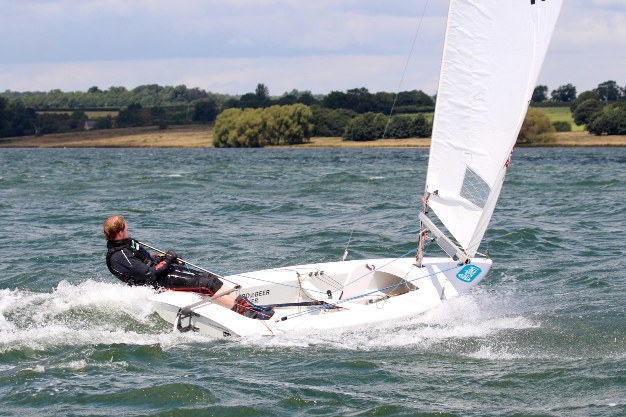The Streaker
The Streaker is a lightweight single-handed dinghy with good handling characteristics. It is suitable for a wide range of abilities from relative beginner to expert racer. It is light weight and easy to handle ashore with a simple rig which gives a forgiving sail for the beginner yet can produce an exhilarating racing performance for the expert. The rules allow a variety of cockpit layouts and construction materials. The Streaker Class Owners Association works hard to keep the design up-to-date and encourages friendly but competitive racing. Recent years have shown that the design still competes successfully with the best single-handed designs currently available. Sailors from juniors under the age of 21 to those over 70 both male and female compete together in a active racing circuit consisting of over 25 meetings a year throughout the country.
Streaker stats
Length: 3.88 m (12' 9")
Beam: 1.37 m (4' 6")
Min. hull weight: 48 kg (106 lbs)
Max. sail area: 6.5 sq.m (70 sq. ft)
Current PY: 1128 (2018 onwards)
Construction and Rules
The Streaker can be built in wood, GRP or FRP. Modern FRP boats are built by licenced builders (Butler Boats and The Boatyard at Beer). Butler Boats also supply wooden boats, either complete or in part-built or kit form. It is also possible to build your own wooden boat using the plans available from the class association.
The Streaker is a one-design class but the rules allow for some choice in the rig and cockpit layout.
Sails are available from many sailmakers. Currently there are 7 'class approved' sailmakers (HD, McNamara, Morgan, North, Pinnell & Bax, Rooster and Sail Register). Sails can be purchased from other sailmakers but need to be individually measured by a class approved measurer.
The Wave Sail is a smaller sail that has been developed for lighter helms and/or windy weather (see photo below).
Masts and booms are available from Selden and Super Spars. Carbon booms have been allowed since 2019; these can be bought from professional spar-makers or made by amateurs. You can also choose to buy your foils from any manufacturer or build your own.
Over the years the exterior hull shape has remained the same but the cockpit layout has developed gradually. Modern boats have a false floor extending from the front of the cockpit to the aft end of the dagger board box. This means the cockpit can carry less water and is easier to drain as water runs aft to the deeper area where the self bailers are. At the end of 2012 the rules were changed to allow for a shorter stern deck and therefore a longer cockpit. This enables the boom and sail to be more easily stowed in the boat. In 2013, another rule change allowed wooden boats to have double-thickness floors instead of the original-style floor battens and therefore it is possible to build them stiffer than before.
Most boats currently use the 'laser-style' mainsheet system but some people prefer a centre-mainsheet system. For a while, the centre-mainsheet could only be attached to a strop at the thwart. However, at the 2016 AGM it was decided to allow mainsheet tracks and travellers attached to the thwart.








